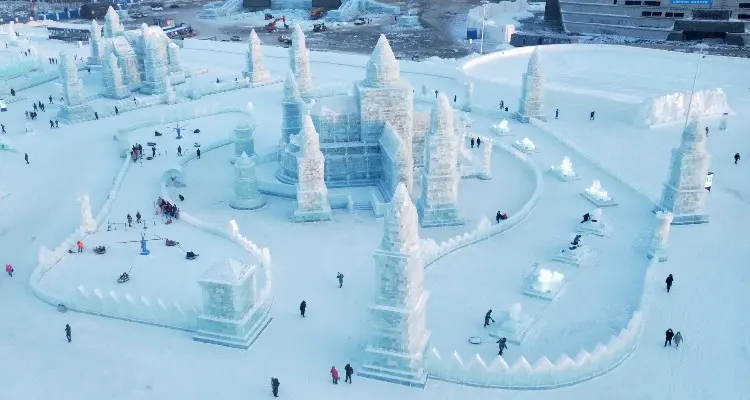
Each year, Harbin (the capital of China’s northernmost province) transforms the city into a winter wonderland, where architects and artists from around the world showcase their skills by carving massive blocks of ice into intricate designs. The celebration is an incredible testament to human creativity and the resilience of architecture against and in harmony with the forces of nature.
This annual event, celebrated for its spectacular ice and snow sculptures, offers more than just visual splendor; it’s an example of the possibilities of “temporary architecture,” in the same captivating spirit that makes events like Burning Man hold such allure.
The structures at the Harbin Ice Festival range from towering castles and pagodas to detailed sculptures, all illuminated by vibrant LED lights to create a mesmerizing spectacle against the dark winter nights.
The festival not only celebrates artistic expression but also engineering ingenuity. The creation of these ice buildings involves meticulous planning and understanding of the material’s properties under Harbin’s extreme cold temperatures. This event provides valuable insights into the potential of ice as a building material, emphasizing sustainability and the temporary nature of construction, which leaves no permanent impact on the land.
At COR3, we are inspired by the Harbin Ice Festival’s commitment to merging art with architecture, utilizing natural materials to create ephemeral structures that captivate and inspire. It challenges us to think about the sustainability of materials and the transient nature of what we create. The festival encourages architects to explore innovative design solutions that harmonize with their environment, promoting a balance between human activity and natural preservation.
As we look forward, the Harbin Ice Festival stands as an inspiration for our architects and while we won’t be creating shopping centers out of ice anytime soon, we’re excited to carry forward the lessons learned from Harbin’s icy spectacle to our practices.


